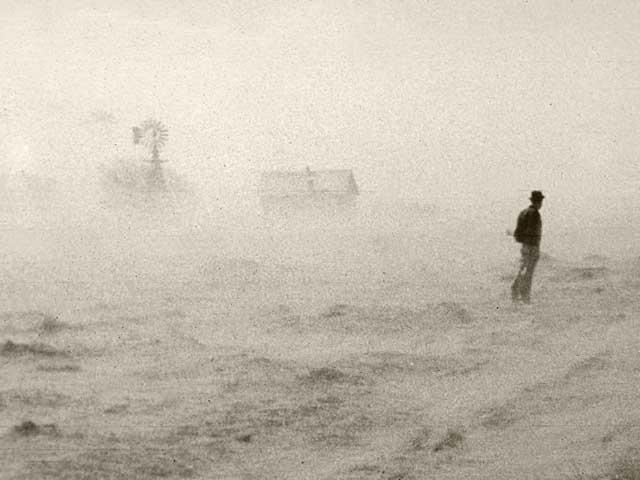Tracking Worst Droughts in US History
Breaking Down Worst Droughts in US History: Four Periods Stand Out
LINCOLN, Neb. (DTN) -- With drought conditions expanding this growing season, naturally, questions are asked about where the 2023 dry conditions fit in the overall historical picture.
That story is still being written, but there are many drought periods dating back to the 1930s that would be considered among the worst for agriculture.
With the help of DTN Ag Meteorologist Emeritus Bryce Anderson, we've narrowed it down to four drought periods that could be considered among the worst ever recorded.
While there's little doubt as to the No. 1 drought of all time, it may be open for debate as to where the other drought periods fall.
Other notable droughts not making the cut were the North American Drought of 2000-2002; the 2017 drought in the Northern Plains; the 2021-2022 drought in the Plains and Western U.S.; the 1870-1877 Great Plains drought; the Northeastern U.S. drought, 1960-1965; and the 2010-2013 Southern U.S. drought, to name a few.
These four drought periods stand out:
4. PLAINS/MIDWEST 2011-2012
The 2011-2012 drought destroyed or damaged portions of corn and soybean crops in the Midwest, according to a 2015 USDA report. The drought led to price increases for corn, soybeans and other crops, as well as for animal feed.
About 80% of agricultural land experienced drought in 2012.
According to USDA, the 2012 drought rapidly increased in severity from June to July and persisted into August. As of Sept. 12, 2012, more than 2,000 U.S. counties were designated as disaster areas.
As of Aug. 14, 2012, USDA said 60% of farms were in drought areas. At least 70% of both crop and livestock production was in areas experiencing at least moderate drought.
According to a 2015 study by USDA meteorologist Bradley R. Rippey, losses from the 2012 drought were on par with losses in 1988 -- topping $30 billion.
The USDA report said corn suffered most in 2012. That year, USDA estimated at planting time a yield of 166 bushels per acre and 14.79 billion bushels total production.
P[L1] D[0x0] M[300x250] OOP[F] ADUNIT[] T[]
The final 2012 numbers placed the corn yield at 123.1 bushels per acre and total production at 10.76 billion bushels.
3/ MIDWEST 1988-89
The drought of 1988 to 1989 may not have been long by historical standards, but it packed a punch.
The New York Times reported in 1993 the 1988-1989 drought destroyed 45% of the corn crop in the U.S.
According to a 1991 report from the U.S. Geological Survey, stream flow was below normal at 62% of 181 key stream-gaging stations throughout the U.S. and southern Canada in 1988.
The drought covered about 30% of the country and was the most costly drought on record -- tallying about $39 billion in losses.
In some areas of the country, the late '80s drought created scenes right out of the Dust Bowl. In February 1988, for example, dust storms closed schools in South Dakota.
2. TEXAS/SOUTHERN PLAINS 1950s
According to a February 2022 state of Texas report, "Drought in Texas: A Comparison of the 1950â??1957 and 2010â??2015 Droughts," the 1950 to 1957 drought began in the late spring of 1949 in the lower valley and affected western portions of the state by the fall. The drought covered nearly all of Texas by summer 1951.
The drought had spread to both Kansas and Oklahoma by 1953.
In 1950, statewide annual precipitation totaled about 90% of normal, sliding to just under 75% percent of normal in 1951. Rainfall totals bounced back to 80% and 84% of normal the next two years before tanking to just 66% in 1954.
By 1956, Texas precipitation was just 55% of normal.
"A highly simplified regression analysis of U.S. Department of Agriculture Economic Research Service statistics suggests that agricultural production losses due to the drought totaled $17.75 billion," the Texas report said.
"Total losses to the state economy, including indirect and secondary effects, were undoubtedly much larger."
1. DUST BOWL 1930s
Because the Dust Bowl years led to a sea change in how agriculture was practiced across the country, the 1930s drought tops the list by a long shot.
Simply put, farmers were driven during the Great Depression to produce more to keep up with mounting debt. Combined with drought, Midwest soil dried into dust and blew away American farms.
At the end of the 1930s, more than 2.5 million people left the Plains and migrated to California and other regions.
According to the National Drought Mitigation Center at the University of Nebraska-Lincoln, the 1930s drought is considered to be the so-called U.S. drought of record.
The drought mitigation center said the Dust Bowl included several distinct events -- four major drought events -- that happened so quickly regions were unable to recover before a new drought began.
The drought gripped the western third of Kansas, southeast Colorado, the Oklahoma panhandle, the northern two-thirds of the Texas panhandle and northeast New Mexico.
Though it is not possible to add up all the costs of the Dust Bowl, one estimate placed financial assistance from the federal government in the 1930s at about $1 billion. In 1939 dollars, that would be about $22 billion.
According to a 1937 bulletin by the Works Progress Administration, about 21% of all rural families in the Great Plains were receiving emergency government funds.
The drought mitigation center said that from 1933 to 1934, about 10% of all farms changed hands.
By 1941, near-normal rainfall returned to the region and the recovery was underway.
Todd Neeley can be reached at todd.neeley@dtn.com
Follow him on Twitter @DTNeeley
(c) Copyright 2023 DTN, LLC. All rights reserved.




